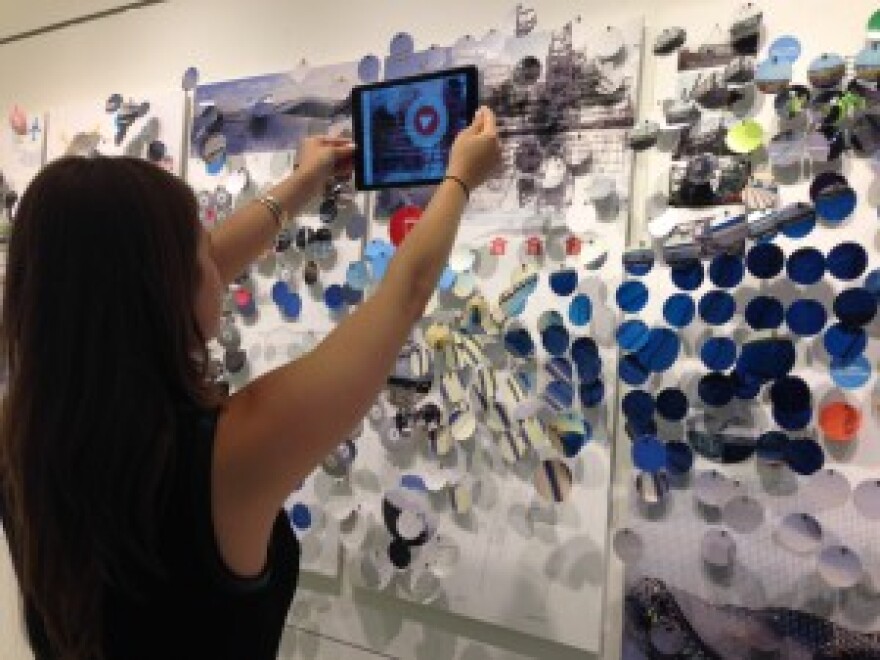Airports and hospitals. Two places not generally on the top of a tourist must see list. But Spanish architect Luis Vidal has spent the last decade trying to change that — building airports that are destination and hospitals you don’t dread walking into. You can get a glimpse of his work at a new exhibit at the Dallas Center for Architecture.
Six thousand coaster-sized paper cards spring from metal stems along the walls of the Dallas Center for Architecture (DCA). Each one has been hand-planted, like a flower that’s sprouted sideways.

The interactive exhibit, Encounters, features major projects created by the Madrid-based architecture firm Luis Vidal + Architects (LVA).
The show uses technology to give you a glimpse into the making of airports – LVA just finished The Queen’s Terminal at London Heathrow Airport — train stations and hospitals.
A New Way To Display Architecture
There are no miniature architectural models at the DCA. Instead, Vidal has chosen to display works using augmented reality.
A downloadable app created for the exhibit (ipads are provided on-site) allows visitors to hover in front of various images to “enter” buildings and see behind-the-scene videos.
One time-lapse video shows the construction of London Heathrow’s Terminal 2.
The structure is open and sleek — with an undulating roof that mimics the movement of a bird’s wing. There’s natural light and calm white spaces – instead of loud signage and duty-free shops hawking alcohol and perfume.

The philosophy behind Vidal’s airports is simple – put the passenger first. Make the space easy to maneuver, not overwhelming. It’s also the philosophy behind the hospitals he’s designed. Put the patient first.
Making Hospitals Hospitable
Hospitals don’t have to be scary places, says Vidal.
“We try and make them more humane, more urban, we try and get society to use the building without being afraid of them,” he says.
LVA has designed what will be the largest hospital in Europe, the Vigo hospital in Spain. The building, which opens in 2015, will have 1500 beds — The new Parkland Hospital in Dallas will have fewer than 900.
Vidal wanted the building to blend in, to be inviting. So his firm used prismatic paint on the outside, which changes color depending on the angle you look at it.
“So as you’re driving past,” Vidal says, “the building changes colors, so we chose white, green and blue because those are the three predominant colors in Vigo with the sky, the sea and the mountain.”
Colors also play an important role inside of the hospitals Vidal has designed, guiding visitors through the buildings without flashy signs. Doors and entrances are blue, information areas are red, and doctor’s areas are white.
Sound, Vidal says, is also an important factor for hospital design – some areas need to be quiet, but others should feel alive.
“When you’re in the lobby,” Vidal says, “you want the place not to sound dead. You want it to be vibrant, have some music, and have some movement.”

Which is why Vidal also brings in garden hospitals, and renewable energy. That also lowers operational costs for medical buildings, which are generally open 24/7.
Vidal hasn’t designed any hospitals in the U.S. yet, but he’s working on two in South America. It’s all part of a mission to create a new concept of healthcare architecture around the globe.




